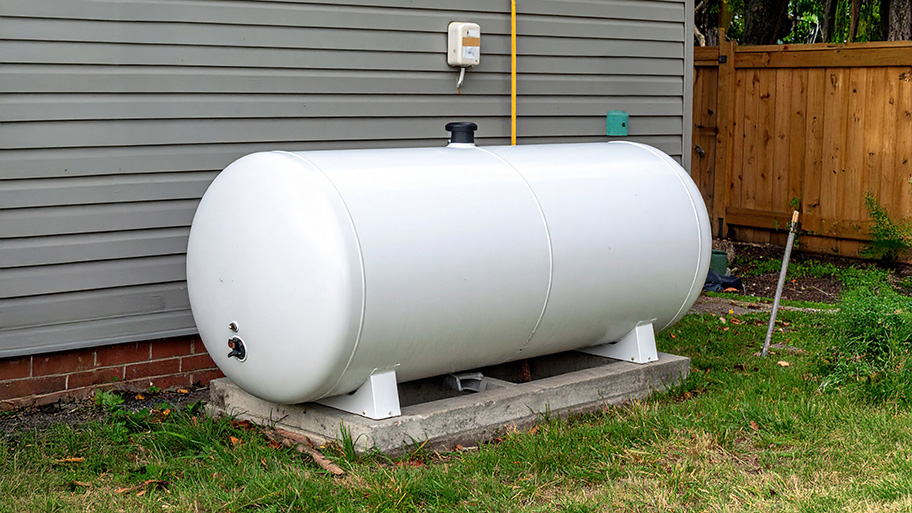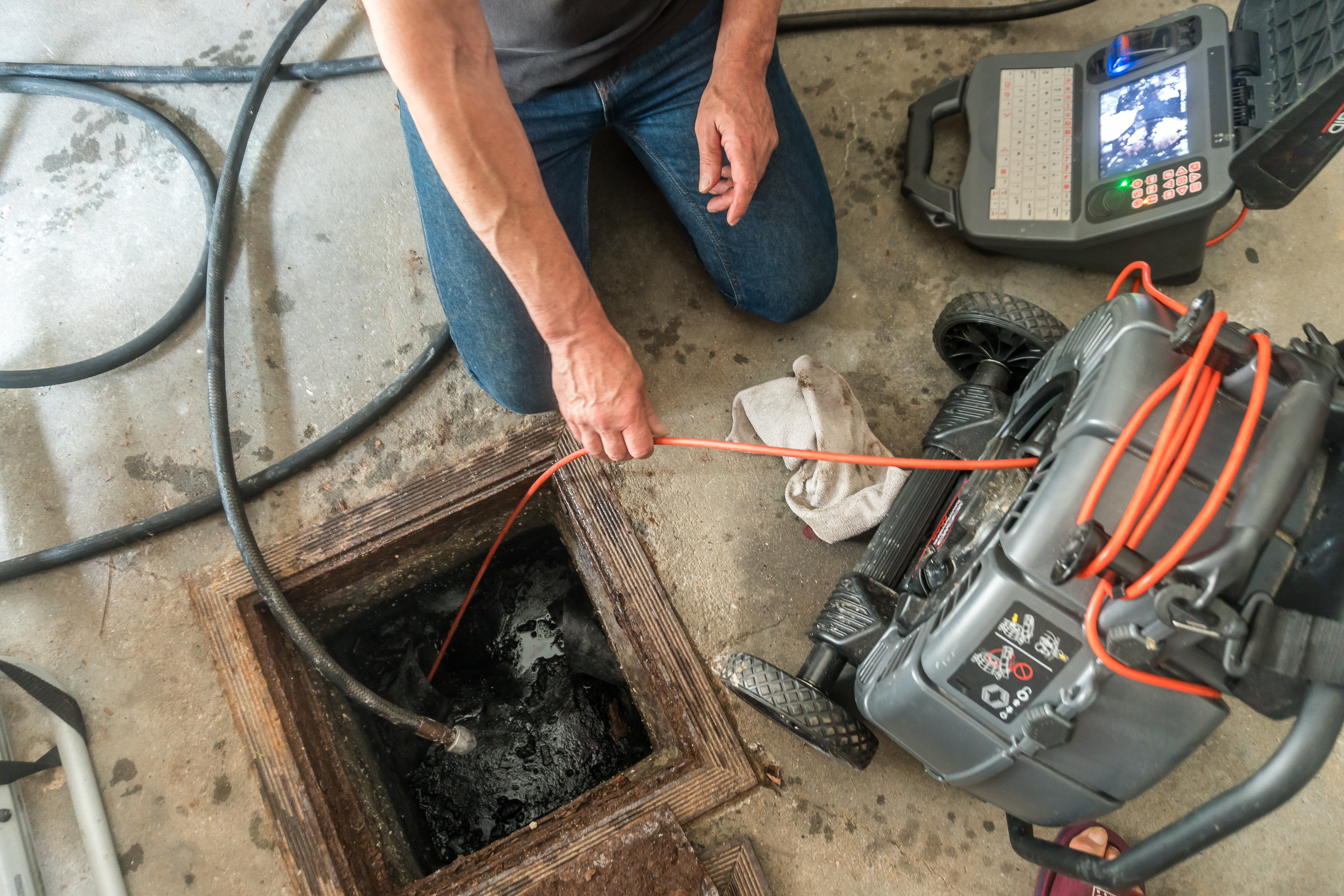
The average propane tank costs between $600 and $2,500, depending on the size, location, and more. Our expert guide explores all the factors.
Picking between PEX and copper isn't always easy


While PEX has become more popular than copper in recent decades, some homeowners are still attracted to the long life span of copper pipes.
Copper plumbing is significantly more expensive than PEX plumbing.
The flexibility of PEX makes installation easier.
The easy maintenance of PEX doesn't always make up for the fact that this material is more vulnerable to temperature fluctuations, rodent damage, and general wear and tear compared to copper.
Copper plumbing can last up to 30 years more than PEX.
| Price (per ft.) | $0.50—$2 | $2—$8 |
| Recyclable | No | Yes |
| Lifespan | 25—50 | 50—70 |
| Installation | Easy | Difficult |
| Corrosive | No | Yes |
| Maximum Temp: | 180° | 400° |
Are you struggling to decide between PEX vs copper for your home's plumbing? While both choices have been used for decades, PEX vs copper pros and cons aren't always obvious for homeowners until they do their homework. This guide offers what you need to know before installing or replacing pipes in your home.
It's time to get to know your piping options. Formally known as cross-linked polyethylene, PEX is a type of flexible synthetic piping that has been widely used in residential home construction since the 1980s. Copper piping is a rigid option that is made from pure metal. While copper has been used for generations, it became popular in residential home construction as a replacement for lead piping in the 1960s.
As every homeowner knows, you can't choose materials for your home without factoring in the ease of ownership. That's why installation and maintenance are so important when investigating PEX versus copper pipes. Is PEX better than copper when it comes to DIY installation?
Generally, copper pipes require more upfront work at installation. Manufacturers create copper pipes in straight tubes. Prior to installation, these tubes must be cut and welded to fit specific lengths and connections. Additionally, it's typically necessary to remove sections of drywall in order to install copper pipes in existing homes. This is one of the reasons why DIY copper pipe installation isn't realistic for most people. Meanwhile, PEX is a flexible, ready-to-go option that allows you to snake your new pipes through walls. Many people who update older homes end up replacing copper with PEX to save money.
Copper's complexity can also make maintenance more complicated compared to PEX. If there's a leak somewhere along a home's plumbing system, it will be necessary to open the walls to access the leak. The aftermath can include new drywall, patching, and painting.
Which material lasts longer when comparing copper versus PEX? With a life span that's 20 to 30 years longer than PEX pipe, copper is the clear winner. Properly maintained copper pipes can be expected to last 50 to 70 years. PEX pipes that are properly maintained generally last for 25 to 50 years. While copper lasts longer than PEX, the truth is that both offer the longevity needed to take care of a homeowner's piping needs for a "lifetime."
Which option is more durable when looking at PEX versus copper? PEX is generally more susceptible to stress compared to copper. Some factors that can wear down PEX prematurely include:
Extreme heat
Heavy chlorine content
Chemical exposure
UV rays
Rodent damage
Friction from PEX pipes rubbing together
None of the factors above impact copper's life span. However, PEX does come out on top when it comes to freezing temperatures. There is always a risk of copper pipes freezing in the wintertime. With the temperature pipes freeze at around 20 degrees Fahrenheit or colder, the freezing risk is a bigger concern in older homes that may have poor insulation or outdated plumbing systems.
While copper plumbing can leave homeowners worrying about bursting pipes that lead to extensive flooding, those with PEX pipes can breathe a little easier because they know that PEX can expand up to eight times its size before freezing. That's no small thing when you consider that the cost of a pipe leak can range from $150 to $4,000. Of course, selecting the best pipe insulation materials is also important for stopping the problem of copper and PEX pipes freezing.

Corrosion of household pipes can cause toxic metals and other substances to leach into drinking water. While copper pipes can often last for decades before being affected by corrosion, this is one category where PEX performs much better. Like all metals, copper can experience corrosion when exposed to high acidity. Copper also puts a home's water supply at risk for mineral buildup.
PEX is 100% resistant to corrosion. That isn't to say that PEX doesn't come with its own potential concerns. Some research shows that chemicals from PEX pipes can leach into water. In some cases, contaminants and chemicals that leach into water via PEX pipes could encourage bacterial growth.
Homeowners can expect to pay 20% to 40% more when installing copper pipes over PEX. On average, PEX water pipes cost 50 cents to $2 per linear square foot. Copper costs closer to $2 to $8 per linear foot. Due to the complexity of installing copper pipes, labor costs tend to be significantly higher for copper versus PEX. If you're replacing existing pipes with copper, be sure to factor in costs for drywall replacement in areas where you need to open up the wall to access piping. The average cost to repair drywall is between $50 and $75 per square foot.
If the environmental impact of the materials you use in your home is important to you, you might be wondering if PEX and copper can be recycled. Unfortunately, the manufacturing process leaves PEX unable to be recycled. While PEX can't be recycled, PEX tubes can sometimes be repurposed for other building projects. By contrast, copper is recyclable in the true sense of the word because it can be melted down for reuse after it has been used for piping.
There's another cost detail to consider when comparing costs for PEX versus copper. Due to its conductive properties, copper is actually much less efficient compared to PEX. What this means is that water traveling through copper pipes can be expected to lose a significant amount of heat before it reaches a fixture or spout in a home. The insulated design of PEX piping makes it far more efficient. What this means for homeowners is that PEX allows water to achieve the desired temperature much faster compared to copper. In addition to requiring more energy to heat water, copper piping also wastes significantly more water compared to PEX pipes. When providing quotes, local plumbers can also provide tips for choosing the most efficient plumbing materials when installing or upgrading a system.
From average costs to expert advice, get all the answers you need to get your job done.

The average propane tank costs between $600 and $2,500, depending on the size, location, and more. Our expert guide explores all the factors.

The average cost to replace a bathroom faucet typically ranges from $170 to $360. Faucet installation costs often vary based on the selected fixture hardware.

How much does hydro jetting cost? Learn hydro jet drain cleaning prices based on factors like the extent of the clog, accessibility, and more.

Winter can be particularly harsh on your plumbing—from water heater issues to frozen pipes. As the weather gets chilly, use these tips to prepare your home and avoid a costly winter plumbing leak.

Learn how to remove a bathtub drain for cleaning or replacing, whether you’ve got a simple toe-touch stopper or a more complicated trip-level model.

Understand Title 5 inspection costs, including average prices, key cost factors, and tips to save money on your septic system inspection.